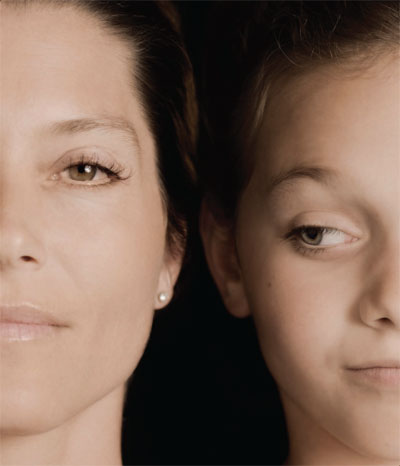 A 2014 poll conducted by NPR with the Robert Wood Johnson Foundation and the Harvard School of Public Health found that 34 percent of those who live with teens said they’d had a great deal of stress in the past month. Teens test boundaries, as their stage of development requires. Parents worry about risky behavior and irreparable choices that could affect their child’s future. It’s a recipe for conflict that can stress the best.
A 2014 poll conducted by NPR with the Robert Wood Johnson Foundation and the Harvard School of Public Health found that 34 percent of those who live with teens said they’d had a great deal of stress in the past month. Teens test boundaries, as their stage of development requires. Parents worry about risky behavior and irreparable choices that could affect their child’s future. It’s a recipe for conflict that can stress the best.
Now, imagine trying to handle a teen with a personality disorder, chemical imbalance, eating disorder or other serious mental health issue that causes them to go above and beyond the typical actions of teen rebellion.
That’s where Seattle parents Janice and Kevin found themselves three years ago. Candace, their 15-year-old daughter, was being treated for ADD and was having trouble coping with the pressures of school and peer relationships. Unable to deal with the stress, she started cutting herself and having thoughts of serious self-harm.
Parental concern and discipline was met with extreme hostility and a few attempts at running away. Police had to be called twice to help deal with the situation. The conflict, combined without outside factors that included a job lay-off, began to fracture the parents’ relationship, and it seemed that all was lost.
Despite medication, weekly visits to a supportive therapist, and monthly visits to a psychiatrist, Candace was not improving. It took a late-night trip to the hospital emergency room to convince the family that more needed to be done. Candace’s therapist suggested a relatively new method — Dialectic Behavior Therapy (DBT). He referred them to Annie McCall, a counselor who had studied at the University of Washington under Marsha Linehan, Ph.D., who developed the practice.
Treating the family
McCall chooses to treat both parents and child together, because a family is a system.
“It is very difficult for just one person in a system to change their behavior,” McCall says.
The teenager is sometimes the canary in the coalmine — their out-of-control behavior can be an indicator that things are not going the way they need to at home. Sometimes the parents’ tactics work in the short term, but over time they can end up causing new problems.
McCall’s approach gives parents their own coach so they can learn skills for effective parenting in extreme situations and how to regulate their own emotions and actions when stress levels rise.
McCall’s treatment centers on group counseling with four–six families. Sessions are structured in four, six–eight-week modules: Distress Tolerance, Emotion Regulation, Interpersonal Effectiveness and The Middle Path. It is a commitment for the family, in both time and money. Each module begins with two weeks of mindfulness — based on the Zen practice — to learn how to bring your reasonable mind (logical, rational, and task-focused) and your emotional mind (emotional, mood-dependent, and often irrational) together to become the wise mind. By learning to access the wise mind, one can use a balance of emotion and reason to find a middle path.
“The group setting is important because parents and kids learn more from each other than they will learn in an office by themselves,” McCall says. Both teens and parents can get a better understanding of their relationship when they see others in a similar situation. The group reduces the feelings of isolation that come with the extreme stress.
“I found it so helpful to see that our problems were not unique,” Janice says. “It reminded me of my [parent-baby support] group when Candace was a newborn.”
McCall’s program uses a rolling entry. New families can begin their treatment at the start of any one of the modules, as other families graduate out. The result is that families at different stages of the program are thrown together — some just starting, some in the middle, and others on their last stretch. This staggering helps both parents and teens see that there is light at the end of the tunnel.
“I was very surprised when we attended our first session to see that some of the kids seemed so together and mature. I couldn’t imagine they had problems anything like my daughter’s,” Janice says. “Listening to them talk about their experiences and to see the progress they’d obviously made gave me hope that our family would come through this too.”
How it works
Each participant receives a workbook containing instructional information and worksheets for both in-class exercises and homework. Yes, homework. Family members have to work together and as individuals to create better systems of communication and conflict management.
McCall teaches techniques to identify and handle life’s stressful situations in a positive manner. Everyone has negative ways of coping with stress. Known as target behaviors, these can range from eating a gallon of ice cream to escape through drug/alcohol abuse or other risky behavior.
The basis for DBT is that there are two points to deal with a stressor: accept or change — that’s the dialectic. Participants learn how to determine where their particular stressors fall between those two points and how to proceed from there — without flying into a rage, falling apart or resorting to an unwanted target behavior. Think of it as extreme coping for extreme situations.
Anectdotally, McCall says, “As families work through the process, they learn to use their skills, and most succeed.”
A 2010 study by Michael G. McDonnel et al. published in Child and Adolescent Mental Health found “A statistically significant increase in overall functioning, as well as a decrease in number of psychotropic medications and non-suicidal self-injurious behaviour (NSIB) was observed within the DBT group … These preliminary data suggest that DBT is beneficial for youth with NSIB in long term inpatient psychiatric care.“
“I’d say it definitely saved our family,” Janice says. “It didn’t fix all our problems, and there is still the occasional heated moment — but it all seems closer to normal now. Our daughter is still on ADD meds and will never be a social butterfly, but she seems to be handling the everyday stresses of life better. She made it through high school and her freshman year of college without incident, and every day we breathe a little easier as she works her way to becoming a happy and self-reliant adult.”
Finding a DBT therapist
Unfortunately, there is currently no widely recognized certification for DBT therapists, which can make it difficult to find a qualified provider. If your child is already seeing a mental health counselor or psychiatrist, you can ask them for a recommendation. A web search for your area is also a good place to start, but the amount of choice can be daunting.
DBT Therapist Annie McCall says, “DBT is a complicated treatment for complex problems, so it’s important to make sure that when you’re looking for DBT therapy, you actually find it. But, we do have a few clear markers to define what makes a DBT therapist.”
McCall suggests you ask any therapist offering DBT these three questions:
- Has the therapist participated in at least 50 hours of DBT training?
- Does the therapist belong to a DBT consultation team that meets weekly?
- Does the therapist provide 24-hour telephone coaching?
You can expect a DBT therapist to have a full practice, but many will put you on a waiting list.
Need help from home?
Check out Laura Kastner's wide-minded parenting videos and her book, Wise-Minded Parenting.









